Synonyms:
Argorips cerulea (Sm.) Raf.
Salix annularis J.Forbes
Salix aglaja K.Koch
Salix wargiana Lej.
Salix amygdalina Fr.
English Name:
White Willow
Babylon Weeping Willow
European Violet-willow
Brittle Willow
Almond Willow
Family: Salicaceae
GENERAL DATA
Plant Parts: Bark, leaf, flower, fruit, manna, flower oil, hydrosol
Cultivation Mode: Wild Collection/ Cultivated
In Manufacturing: Pharmaceutical, food, hydrosol, cosmetics, perfumery, herbal tea, oil, soft drinks, alcoholic drinks, confectionery, basket weaving.
🌿 Industries That Use Willow Bark (Salix alba L.) – Medicinal Bark
Willow bark, especially from Salix alba (White Willow), has been used for thousands of years as a natural pain reliever and anti-inflammatory agent. Its key compound salicin is a precursor to modern aspirin. The bark also contains polyphenols, flavonoids, and tannins, making it valuable across multiple industries.
1. Pharmaceutical & Traditional Medicine Industry
Applications:
-
Natural Pain Relief & Fever Reduction
Used for headaches, joint pain, backache, and muscular discomfort. Salicin converts to salicylic acid in the body. -
Arthritis & Rheumatism Relief
Commonly used in traditional formulas for osteoarthritis and rheumatic pain. -
Anti-inflammatory Support
Included in herbal remedies to manage low-grade inflammation or fevers. -
Herbal Febrifuge & Detoxification
Used in decoctions or teas to lower fever and promote detoxification.
✅ Formats: Dried bark, powdered bark, decoction, capsules, tinctures, extracts
⚠️ Caution: Not suitable for individuals allergic to aspirin or on anticoagulants. Use under supervision in clinical settings.
2. Cosmetic & Skincare Industry
Applications:
-
Acne & Oily Skin Treatments
Due to its salicylic acid content (via salicin), it’s used in anti-acne formulations and exfoliating products. -
Soothing & Astringent Products
Helps tighten pores, reduce inflammation, and soothe irritated skin.
Often included in:
-
Clarifying facial toners
-
Herbal face masks
-
Scalp treatment serums and shampoos
✅ Formats: Willow bark extract, hydrosol, powdered bark
3. Nutraceutical & Wellness Products
Applications:
-
Dietary Supplements for Joint Support
Marketed for natural pain relief and mobility enhancement. -
Herbal Detox Formulas
Included in liver detox teas or inflammation-reducing wellness blends.
✅ Formats: Herbal capsules, standardized extracts, tea blends
4. Ethnobotanical & Traditional Herbal Markets
Cultural Uses:
-
Traditional remedy for pain, fever, and inflammation in Persian, Greek, Chinese, and European herbal medicine.
-
Used in folk detox blends and blood-purifying formulas
✅ Formats: Loose dried bark, herbal mixtures, decoction ingredients
5. Animal Health & Veterinary Use
Applications:
-
Used in ethnoveterinary medicine to reduce joint pain in horses or cattle
-
Sometimes incorporated into natural pet pain relief formulas under veterinary guidance
✅ Formats: Dried bark decoctions, feed additives (with professional direction)
6. Agricultural & Horticultural Applications
Applications:
-
Natural Rooting Hormone
Willow bark tea contains auxins and salicylic acid—used to encourage root development in plant cuttings -
Compost Activator
Acts as a bio-stimulant when added to compost piles
✅ Formats: Fresh or dried bark decoction (“Willow Water”), plant tonic
✅ Summary of Key Applications
| Industry | Common Uses |
|---|---|
| Pharmaceutical & Herbal | Natural analgesic, anti-inflammatory, arthritis remedy |
| Cosmetic & Skincare | Acne solutions, astringent skincare, exfoliating agents |
| Nutraceutical & Wellness | Joint support capsules, detox blends, herbal tea supplements |
| Ethnobotanical & Herbal | Traditional detox and pain relief systems |
| Veterinary Medicine | Natural pain aid for animals (under supervision) |
| Agricultural & Horticulture | Rooting hormone tea, compost enhancer |
✅ Key Features:
-
Rich in salicin, polyphenols, tannins, and flavonoids
-
Known as the “natural aspirin” in traditional medicine
-
Provides anti-inflammatory, analgesic, and febrifuge effects
-
Also used for plant rooting and compost stimulation
-
Use with caution in people with aspirin sensitivity or on blood thinners
🌿 Industries That Use Willow Leaves (Salix alba L.)
Willow leaves, like the bark of Salix alba, contain valuable compounds such as salicin, flavonoids, tannins, and phenolic acids. While less concentrated than the bark, the leaves are used in traditional medicine, cosmetics, and animal health sectors for their astringent, antioxidant, and anti-inflammatory properties.
1. Pharmaceutical & Herbal Medicine Industry
Applications:
-
Mild Analgesic & Anti-inflammatory Use
Used in decoctions or poultices to reduce inflammation and soothe aches. -
Astringent for Skin and Oral Health
Helps tighten tissues, used in gargles for sore throat or inflamed gums. -
Topical Poultices
Applied externally to minor wounds, insect bites, or muscle pain.
✅ Forms: Dried leaves, decoction, poultices, tinctures
2. Cosmetic & Personal Care Industry
Applications:
-
Anti-Aging & Soothing Formulas
Included in skincare blends to tone the skin and reduce inflammation. -
Hair and Scalp Treatments
Used in herbal rinses to reduce dandruff and promote scalp balance.
Often featured in:
-
Toners and facial steams
-
Herbal bath soaks and natural shampoos
✅ Forms: Leaf extract, dried leaf powder, herbal water infusion
3. Animal Health & Veterinary Use
Applications:
-
Anti-inflammatory Aid for Livestock
Used in ethnoveterinary settings for natural pain relief in farm animals. -
Herbal Feed Supplement (with caution)
Sometimes included in traditional herb mixes for sheep, goats, or horses.
✅ Forms: Dried leaves, leaf infusion (with professional supervision)
4. Ethnobotanical & Folk Medicine Markets
Cultural Uses:
-
Used in traditional infusions and compresses for skin or joint problems
-
Historically used as cooling herbal teas or sweat-inducing remedies
✅ Forms: Dried bulk leaf, tea blends, tinctures
5. Agriculture & Horticulture
Applications:
-
Compost and Soil Amendment
Leaves provide organic matter and mild bioactive compounds to stimulate soil life. -
Pest Repellent Rinses (Folk Practice)
Some traditions use willow leaf decoction in plant care and pest deterrence.
✅ Forms: Fresh leaves, dried leaves, decoction (“Willow Tea”)
✅ Summary of Key Applications
| Industry | Common Uses |
|---|---|
| Pharmaceutical & Herbal | Anti-inflammatory teas, gargles, poultices |
| Cosmetic & Personal Care | Soothing skincare, hair rinses, facial steams |
| Animal Health & Veterinary | Anti-inflammatory herb feed or poultice (ethnoveterinary use) |
| Ethnobotanical & Traditional | Folk remedies for pain, fever, and skin issues |
| Agriculture & Horticulture | Compost enrichment, traditional pest repellent decoctions |
✅ Key Features:
-
Contains salicin, tannins, and polyphenols (less than the bark)
-
Used traditionally as a mild pain reliever and skin tonic
-
Supports natural skin care, anti-inflammatory applications, and soil enrichment
-
Sustainable plant part — leaves can be harvested repeatedly during the growing season
-
Often combined with bark or flowers in herbal formulas
🌿 Comparison: Willow Bark vs Willow Leaves (Salix alba L.)
| Feature / Aspect | Willow Bark | Willow Leaves |
|---|---|---|
| Primary Compounds | High in salicin, tannins, polyphenols | Lower salicin content, with flavonoids, tannins, phenolic acids |
| Main Traditional Use | Natural painkiller, anti-inflammatory | Soothing herb for skin, digestive & topical use |
| Potency | Stronger, especially for analgesic effects | Milder, supportive in herbal blends |
| Pharmacological Actions | Analgesic, anti-inflammatory, antipyretic | Mild astringent, cooling, antioxidant |
| Applications | Herbal aspirin alternative, arthritis, fevers | Gargles, teas, facial steams, scalp rinses |
| Cosmetic Use | Rarely used directly | Skin tonics, herbal bath blends |
| Animal Health Use | Ethnoveterinary use for lameness, joint pain | Mild feed additive or topical leaf compress |
| Forms Available | Bark chips, powders, tinctures, capsules | Dried leaves, extracts, decoctions |
| Harvest Time | Spring (before sap fully rises) | Summer, when leaves are full and green |
| Safety Considerations | Not suitable for people with aspirin allergy | Generally safe in small herbal doses |
✅ Summary:
-
Willow Bark is best known for its pain-relieving and anti-inflammatory benefits due to its high salicin content, making it widely used in herbal medicine as a natural aspirin substitute.
-
Willow Leaves offer gentler actions, particularly for topical care, herbal cosmetics, and digestive health, and are often used in traditional and folk remedies.
🌿 Babylon Weeping Willow (Salix babylonica L.) – Overview
Salix babylonica, commonly known as Babylon Weeping Willow, is a fast-growing ornamental tree widely recognized for its graceful, drooping branches and historical symbolism. While it is best known for its decorative landscape value, its medicinal uses have been recognized in traditional Chinese medicine and folk systems.
✅ Key Botanical Parts Used
| Part Used | Description & Uses |
|---|---|
| Leaves | Used in infusions or decoctions for fevers, colds, and skin conditions. They contain flavonoids, phenolic acids, and small amounts of salicin. |
| Bark (Twigs/Branches) | Richer in salicin and used in similar ways to Salix alba for pain relief, headaches, and arthritis. Bark from younger branches is preferred. |
| Catkins (Flowers) | Rarely used medicinally, but in some traditions, included in spring tonics or bee forage. |
🌱 Traditional & Herbal Applications
-
Pharmaceutical & Traditional Medicine
-
Antipyretic & Analgesic: Used for fevers, rheumatic pain, and mild headaches.
-
Anti-inflammatory: Bark decoctions used like Salix alba for joint or muscular pain.
-
Detoxification: Folk remedies include leaves in spring detox blends.
-
-
Cosmetic & Topical Applications
-
Leaves used in herbal facial steams, toners, and scalp rinses for oily skin or dandruff.
-
Mild astringent properties support skin-tightening and pore-cleansing products.
-
-
Ornamental & Landscaping Industry
-
Valued for aesthetic landscaping, waterside planting, and shade trees.
-
Planted in spiritual gardens or memorial parks due to historical symbolism.
-
-
Ethnobotanical & Cultural Uses
-
Associated with mourning, melancholy, and reflection in literature and art.
-
Used symbolically in Asian, European, and Middle Eastern traditions.
-
🌿 Key Features of Salix babylonica:
-
Contains moderate levels of salicin—less than Salix alba but still bioactive.
-
More ornamental in nature, but young twigs and leaves have recognized therapeutic potential.
-
Used in Chinese medicine under the name “Liu Shu Pi” (柳树皮) – mainly for clearing heat, resolving toxins, and easing pain.
🌿 European Violet-Willow (Salix daphnoides Vill.) – Overview
Salix daphnoides, commonly known as European Violet-Willow, Violet Willow, or Daphne Willow, is a deciduous species native to Central and Southern Europe, often found along riverbanks and moist soils. It’s notable for its smooth, purple-violet bark and its early-season pollen-rich catkins, making it an important ecological and medicinal species.
✅ Key Botanical Parts Used
| Part Used | Description & Uses |
|---|---|
| Bark (especially young shoots) | Contains salicin, flavonoids, and tannins. Traditionally used for pain, inflammation, and fever. |
| Leaves | Occasionally used in folk teas; mild astringent and detoxifying properties. Less commonly used than bark. |
| Catkins (flowers) | Important for pollinators; not typically used in medicine, but valued in biodiversity-based agriculture. |
| Twigs & Wood | Used in basketry, fencing, and natural dyeing (due to its violet bark). |
🌱 Traditional & Industrial Applications
-
Pharmaceutical & Herbal Medicine
-
Analgesic & Anti-inflammatory: Bark is rich in salicylates, used like Salix alba in pain relief and fever reduction.
-
Mild Antiseptic & Astringent: Beneficial for wound washes and mouth rinses.
-
Applied in:
-
Herbal teas
-
Decoctions and compresses for joint pain
-
Topical extracts for skin care
-
-
-
Natural Dye & Tanning Industry
-
Violet outer bark yields reddish-brown to purplish hues.
-
Bark used in natural dyeing of wool and textiles.
-
Contains tannins, which support traditional leather tanning methods.
-
-
Basketry & Woodcraft
-
Flexible young twigs are prized in traditional weaving.
-
Used for making fences, tool handles, and craft items.
-
-
Apiculture & Ecological Uses
-
One of the earliest pollen sources in spring for bees.
-
Frequently planted along waterways for soil stabilization and biodiversity enhancement.
-
-
Ornamental & Landscaping
-
Grown for its striking purple stems, especially attractive in winter.
-
Used in hedgerows, biofencing, and wetland restoration.
-
🌿 Key Features of Salix daphnoides:
-
Bark contains salicin, tannins, and coloring compounds.
-
Highly ornamental with deep violet branches.
-
Acts as an early food source for pollinators.
-
Used in folk medicine, craft, and dye-making across Europe.
🌿 Industries That Use Brittle Willow Bark (Salix fragilis L.)
Brittle Willow, also known as Crack Willow, is a fast-growing European willow species recognized by its brittle branches that snap easily—hence the name. Its bark, like other Salix species, is rich in salicin, a precursor of aspirin, and is traditionally harvested from young shoots or mature trunks.
It supports a range of industries due to its analgesic, anti-inflammatory, antipyretic, and astringent properties.
1. Pharmaceutical & Herbal Medicine Industry
Applications:
-
Pain Relief (Analgesic): Used to treat headaches, back pain, and joint pain.
-
Anti-inflammatory: Helps reduce inflammation in conditions like rheumatism and arthritis.
-
Fever Reduction: Used as a natural antipyretic, especially in traditional European remedies.
-
Digestive Tonic: Mildly astringent; sometimes used for diarrhea or intestinal inflammation.
-
Wound Healing: Decoctions applied topically to clean minor wounds or ulcers.
✅ Form: Dried bark, decoction, herbal powder, capsules, tinctures
2. Nutraceutical & Wellness Industry
Applications:
-
Added to joint support formulas and anti-inflammatory blends
-
Marketed as a natural aspirin alternative
-
Used in detox teas and liver-cleansing infusions (in combination with herbs like Dandelion or Burdock)
✅ Form: Powdered bark, capsules, herbal teas
3. Cosmetic & Dermatological Industry
Applications:
-
Astringent & Anti-inflammatory Skin Care: Helps calm irritated or acne-prone skin
-
Used in herbal facial cleansers, acne masks, and skin soaks
-
Scalp tonics and shampoos for dandruff or oily scalp
✅ Form: Decoction, infused oil, extract, or bark powder
4. Agriculture & Animal Health
Applications:
-
Sometimes included in natural livestock tonics for pain or inflammation
-
Used in eco-friendly plant treatments due to mild antimicrobial and antifungal effects
✅ Form: Bark powder or decoction in veterinary herbal blends
5. Dye & Tannin Industry
Applications:
-
The bark contains tannins, making it suitable for:
-
Leather tanning in traditional methods
-
Natural dyes in textile dyeing (yields beige to reddish hues)
-
✅ Form: Bark chips, boiled extract
6. Ethnobotanical & Traditional Use Markets
Applications:
-
Used in folk medicine traditions across Europe and Asia
-
Sold in ethnic apothecaries, botanical herb shops, and organic wellness markets
-
Common in medieval and historical reenactment medicine kits
✅ Form: Loose dried bark, tincture, decoction bundles
✅ Summary of Key Applications
| Industry | Common Uses |
|---|---|
| Pharmaceutical & Herbal Medicine | Analgesic, antipyretic, anti-inflammatory, wound care |
| Nutraceutical & Wellness | Natural aspirin, joint support, detox blends |
| Cosmetic & Dermatological | Acne treatment, scalp care, soothing skin products |
| Agriculture & Animal Health | Pain-relief herbal tonics, mild antiseptic for livestock |
| Dye & Tannin | Leather tanning, natural dyeing of textiles |
| Ethnobotanical Markets | Folk herbalism, traditional European remedies, wellness shops |
🌿 Key Features of Brittle Willow Bark:
-
Rich in salicin (natural aspirin precursor)
-
Tannins offer mild astringent and dyeing properties
-
Used in herbal analgesic and anti-inflammatory preparations
-
Sustainably harvested from young branches or mature trees
-
Must be used with moderation—not suitable for individuals allergic to salicylates
🍃 Industries That Use Brittle Willow Leaves (Salix fragilis L.)
Brittle Willow, or Crack Willow, is commonly known for its rapid growth, moisture-loving habit, and medicinal bark. However, its leaves—especially from young trees—also contain notable bioactive compounds, including flavonoids, phenolic acids, salicylates, and tannins.
Although less potent than the bark, willow leaves are still valued in traditional medicine, cosmetic formulations, and animal care, particularly for their mild anti-inflammatory, antibacterial, and cooling properties.
1. Pharmaceutical & Herbal Medicine Industry
Applications:
-
Mild Anti-inflammatory & Analgesic: Infusions or poultices made from the leaves may soothe joint pain, swelling, or muscle soreness.
-
Wound Care: Leaf decoctions are used topically to clean and disinfect cuts, ulcers, or rashes.
-
Mild Diuretic: Traditional use for supporting kidney health or reducing water retention.
-
Cooling Compresses: Used in traditional medicine to reduce heat or fever through external application.
✅ Form: Dried leaves, poultices, decoction, compress packs
2. Cosmetic & Skin Care Industry
Applications:
-
Natural Astringent: Helps tighten skin and reduce oiliness, especially in toners.
-
Anti-acne Formulas: Added to herbal face masks or rinses for its soothing and antimicrobial effect.
-
Scalp & Hair Rinse: Used in herbal hair care to promote scalp health and reduce dandruff.
✅ Form: Infused water, dried powder, leaf decoction
3. Animal Health & Herbal Veterinary Use
Applications:
-
Natural Anti-inflammatory Support: Sometimes used in traditional remedies for livestock with joint pain or digestive upset.
-
Wound Care in Animals: Topical wash to clean cuts or infected skin in farm animals or pets.
✅ Form: Dried or fresh leaves, herbal wash, infusion
4. Compost, Mulch & Soil Amendment Use
Applications:
-
Bioactive Compost Material: Leaves contain mild levels of natural salicylates and antimicrobials, which may slightly suppress pathogens in compost.
-
Used in natural mulch for pest-deterring properties in organic gardens.
✅ Form: Dried or shredded leaves
5. Ethnobotanical & Folk Traditions
Applications:
-
Cooling leaf wraps in traditional European and Middle Eastern folk healing
-
Used alongside bark in herbal decoctions or steam baths to relieve muscle fatigue
✅ Form: Whole dried leaves, mixed herbal packs, infused cloths
✅ Summary of Key Applications
| Industry | Common Uses |
|---|---|
| Pharmaceutical & Herbal | Anti-inflammatory compresses, wound healing, mild diuretic |
| Cosmetic & Toiletries | Herbal toners, anti-acne face masks, hair rinses |
| Veterinary & Animal Care | Pain relief washes, topical herbal antiseptic |
| Compost & Agriculture | Mulch, pest-resistant compost material |
| Ethnobotanical Markets | Traditional wraps, bathing herbs, detox compresses |
🌿 Key Features of Salix fragilis Leaves:
-
Rich in phenolic compounds including flavonoids, tannins, and salicylates
-
Cooling and soothing effect when applied topically
-
Less concentrated than bark, but useful in milder applications
-
Traditionally harvested during spring and early summer before yellowing
-
Suitable for external use or low-dose herbal teas
🌿 Comparison: Brittle Willow Bark vs Leaves (Salix fragilis L.)
| Aspect | Bark | Leaves |
|---|---|---|
| Part Used | Outer bark from mature branches or trunks | Leaves, especially young or freshly dried |
| Main Compounds | High in salicin, tannins, flavonoids, polyphenols | Moderate in flavonoids, tannins, phenolic acids, salicylates |
| Medicinal Potency | Strong (comparable to aspirin-like effects) | Mild (gentler anti-inflammatory and diuretic action) |
| Pharmaceutical Use | Internal use for pain relief, arthritis, fever, inflammation | External use for mild inflammation, wounds, compresses |
| Traditional Medicine Use | Analgesic, antipyretic, anti-rheumatic | Cooling, mild wound wash, light diuretic |
| Cosmetic Applications | Rarely used directly in cosmetics | Used in facial toners, hair rinses, acne masks |
| Veterinary Use | Herbal anti-inflammatory or fever aid for livestock | Topical antiseptic and wash for minor wounds in animals |
| Other Uses | Tanning leather (historically), dyeing | Composting, bioactive mulch, pest-repellent foliage in gardens |
| Safety Profile | May cause reactions in salicylate-sensitive individuals | Generally milder; suitable for more external or low-dose uses |
| Forms Available | Dried bark pieces, powders, tinctures, capsules | Dried whole leaves, powders, herbal teas, infused waters |
✅ Key Differences at a Glance
-
Potency: Bark is significantly more potent due to high salicin levels; leaves are gentler and better for skin and topical use.
-
Applications: Bark is used internally for pain and inflammation, while leaves are used more in cosmetics, topicals, and mild medicinal teas.
-
Harvesting: Bark is taken from mature branches in late winter or early spring; leaves are harvested during early summer.
🌿 Almond Willow (Salix triandra L.) – Overview
Salix triandra, commonly known as Almond Willow, Black Maul Willow, or Triandra Willow, is a deciduous shrub or small tree native to Europe and Western Asia. It’s most renowned for its use in basketry, traditional herbal medicine, and soil stabilization projects. The twigs have a light almond-like aroma, and its bark is rich in salicylates—compounds with anti-inflammatory properties.
✅ Key Botanical Parts Used
| Part Used | Description & Uses |
|---|---|
| Bark | Contains salicin and tannins. Traditionally used for fever, pain, and inflammation. Applied in decoctions and herbal extracts. |
| Twigs & Rods | Extremely flexible and smooth. Widely used in basketry, fencing, and weaving. Known as one of the best basket-making willows (Black Maul). |
| Leaves | Occasionally used as livestock fodder or in traditional herbal teas. Bitter and mildly detoxifying. |
| Catkins (Flowers) | Provide early-season pollen for bees and other pollinators. Rarely used in medicine. |
| Wood | Light and pliable. Used in small woodcraft and tool handles. Coppices well for renewable material. |
🌱 Traditional & Industrial Applications
Pharmaceutical & Herbal Medicine
-
Pain Relief & Anti-inflammatory: Bark used for its salicin content—similar to Salix alba—in traditional remedies for fever, headache, and arthritis.
-
Herbal Teas & Decoctions: Used in folk medicine for treating colds, joint pain, and minor infections.
✅ Forms: Dried bark, decoctions, herbal extracts
Basketry & Traditional Crafts
-
Basket Making: Known as one of the finest willows for basketry; the “Black Maul” cultivar is especially prized.
-
Fencing & Rural Construction: Twigs used for wattle fences, fish traps, and other traditional structures.
✅ Forms: Fresh or dried rods, young shoots, woven products
Dyeing & Tanning Industry
-
Natural Dye Source: Bark produces a soft brown hue in wool or textile dyeing.
-
Tannin Source: Useful in traditional leather tanning.
✅ Forms: Bark chips or powder
Agroforestry & Ecological Use
-
Erosion Control & Riverbank Planting: Grows quickly and stabilizes soil in wetland restoration.
-
Pollinator Plant: Early-blooming catkins are important for bee nutrition in spring.
✅ Forms: Live plants, cuttings, coppiced poles
Ethnobotanical & Livestock Use
-
Livestock Fodder: Leaves and young shoots grazed by goats and sheep in some regions.
-
Cultural Basketry Traditions: Used in regional basket-making practices across Europe and Western Asia.
🌿 Key Features of Salix triandra (Almond Willow):
-
Bark contains salicin and tannins—traditional remedy for pain and fever.
-
One of the best basketry willows due to its long, smooth, flexible rods.
-
Early flowering and pollinator-friendly.
-
Used in herbal teas, dyeing, and erosion control.
🌿 Comparison of Willow Species
| Feature / Species | White Willow (Salix alba L.) | Babylon Weeping Willow (Salix babylonica L.) | European Violet-willow (Salix daphnoides Vill.) | Brittle Willow (Salix fragilis L.) | Almond Willow (Salix triandra L.) |
|---|---|---|---|---|---|
| 🌍 Native Range | Europe, W. Asia, N. Africa | China, introduced worldwide | Central & Eastern Europe | Europe & W. Asia | Europe & W. Asia |
| 🌿 Habit | Large tree (20–25 m), upright | Graceful tree with drooping branches (6–12 m) | Medium tree/shrub (6–10 m) | Medium–large tree (15–20 m) | Shrub or small tree (3–10 m) |
| 🍃 Leaves | Long, narrow, silver-green | Narrow, light green, slightly twisted | Violet-hued young shoots, lanceolate | Bright green, brittle branches | Almond-scented, smooth, narrow leaves |
| 🌸 Flowers (Catkins) | Dioecious, yellow-green | Yellow catkins in early spring | Large catkins, purple-tinged twigs | Short catkins, early bloomer | Short catkins, supports pollinators |
| 🧪 Key Compounds | Salicin, flavonoids, tannins | Moderate salicin, volatile oils | Salicin, anthocyanins in twigs | High salicin & polyphenols | Salicin, tannins, almond-scented oils |
| 💊 Medicinal Uses | Pain relief, anti-inflammatory, fever | Mild analgesic, calming in teas | Herbal teas, mild pain relief, skin tonics | Traditional analgesic, arthritis & joint pain | Decoctions for headache, fever, arthritis |
| 🧺 Craft Use | Occasionally for poles | Ornamental only | Limited use | Occasionally for weaving | Best willow for basketry (Black Maul) |
| 🌱 Agro-Eco Use | Soil stabilizer, windbreaks, coppicing | Landscaping, shade | Riverbank planting, early bee forage | Riverbank restoration, erosion control | Coppicing, bee forage, soil regeneration |
| 🍯 Apiculture | Supports early bees | Attracts pollinators | Strong bee attractor | Excellent early bee plant | High nectar from early catkins |
| 🎨 Other Uses | Dyeing (bark), leather tanning | Ornamental, folklore | Natural dyes, hedgerow planting | Bark in dye & tannin industry | Bark for dye, leaves as animal fodder |
| ⚠️ Warnings | Safe in moderate use | Mild salicin content; ornamental | Generally safe | Safe in traditional doses | Safe, but strong-tasting teas can be bitter |
✅ Summary
| Species | Notable Strength |
|---|---|
| Salix alba | Widely used in herbal medicine (salicin), dyeing, and agroforestry |
| Salix babylonica | Ornamental beauty, cultural symbolism, and garden use |
| Salix daphnoides | Violet twigs, eco-restoration, and spring bee forage |
| Salix fragilis | Strong medicinal bark, erosion control |
| Salix triandra | 🌟 Top choice for basketry, also medicinal and agroecological |
PRODUCT NAME IN DIFFERENT LANGUAGES
Persian Name: بید/ Bid
German Name (Deutschland, Austria, Switzerland): Silberweide, Silberweide rinde
French Name (France, Belgium, Switzerland, Quebec): Saule blanc, Saule, Saule écorce, Écorce De Saule Blanc
Feb
Mar
Apr
May
Jun
Jul
Aug
Sep
Oct
Nov
Dec
To order Willow bark, please contact us.
About Salix Spp.
The Salix tree has many species. But its two types are more famous: Brittle Willow (Salix fragilis L.) and Musk Willow (Salix aegyptiaca L.).
Willows are plants in the form of trees or shrubs, with narrow oval leaves and sharp tips. In a number of these trees, the length of the leaves is short, and in some long leaves, they are even up to 16 cm long and 1 to 2 cm wide. Every year the leaves fall and turn green again in the spring. Their flowers, which usually appear in early spring, appear in the form of male and female ovoid or long stalks on one or two legs, upside down and next to the flowering branch.
Their fruit is in the form of a capsule, which blossoms with two valves in the last months of summer, and the numerous seeds that are inside each fruit and each one is equipped with a crown covered with silk warp and fluff, are thrown out and easily spread around by the wind.
The wood of most species of these tree is white and slightly soft.
The best type of Salix grows near water.
Most of them are used for basket weaving, but some of them are more suitable for this purpose than others, which are called basket weaving willows or Saules osiers, and some are not very suitable for this usage because their branches are brittle and fragile and they are used only in cases where there are no suitable types of Salix in the area.
Salix Alba Chemical Constituents
Salicin, daphne flavonoloside, populoside, salipurposide, salicinase, vitamin C.
White Willow Temperament
The flower of this tree is cold in the second degree and the first degree of moist. The leaves of this tree have a cold and dry temperament. The fruit is in the first degree of cold and moist. Its flower oil has a cold and moist temperament.
Willow Health Benefits
Brittle Willow is heart and brain tonic, stomach tonic and liver stagnation reliever.
Its extract removes phlegm, yellow bile and black bile from the body, and is diuretic.
Brittle Willow leaves cure headache, ophthalmia, jaundice, palpitation, thirst, fever and hot diseases. Its fresh leaves poultice and drinking its juice is beneficial for dysentery.
Sleeping on a rug made of Brittle Willow leaves is very helpful in treating jaundice and heat of the liver and heart. Its leaf extract is useful for epilepsy, fever and chills, jaundice, stiffness of the spleen, hysteria, joint pain, gout, scorpion sting and elimination of poisonous herbs effects.
Drops of its leaf extract are very helpful in clearing ear pus.
The poultice of the fruit heals the damage caused to the eye socket and bleeding.
In China, the decoction of young branches or leaves of Babylon Weeping Willow (Salix babylonica L.), which is widely planted in China, is used as a solution for washing abscesses, wounds and cases of skin problems. The decoction of young stems and roots of Babylon Weeping Willow is used in the bathroom to wash the body in cases of inflammation of the skin caused by parasites and fungi.
Babylon Weeping Willow resin, as well as its seed’s cotton fluff and threads are poulticed on bad wounds. It’s very beneficial.
The ash of Babylon Weeping Willow’s root mixed with Rapeseed oil (Brassica napus) is applied as an ointment and oil to the pimples around the mouth. In addition, this kind of Salix is an insecticide and fungicide.
From Brittle Willow, a sweet substance is obtained which is a type of Manna and is called “Willow Manna”, which has relatively similar properties to “Purgative Manna”.
The decoction of its bark, which is usually consumed, is prepared in the amount of 50 grams of bark per thousand grams of water, and one cup is eaten before each meal. Medicinally, the active substance of Salix is “salicin”, which is especially present in its bark. Salicin is a crystallized, colorless Glucosidic crude formula of C13H18O7, which is soluble in boiling water, and because its external form is similar to quinine sulfate, it has long been thought that it is effective in eliminating Malaria fever. Of course, it has a little effect in reducing mild Malaria fevers, but it is ineffective when it becomes severe. This substance is odorless and very bitter.
Salicin glucoside is effective in controlling acute articular rheumatism if 2 grams are taken every 3 to 4 hours.
Willow Dosage
To reduce pain, fever and inflammation, soak a tablespoon of its dry bark powder in a bushel (200 grams) of cold water for 8 hours and after straining, drink 3 pints every day. Because this mixture is bitter and astringent, it can be mixed with a little honey or other sweet fruit juice.
This herb should not be given to children under two years old, pregnant women, breastfeeding mothers, people younger than 16 years old who are suffering from colds, flu and chicken pox, people who are suffering from digestive tract ulcers and flatulence.
It is also harmful for the pelvis.
Side Effects of Salix
Aspirin may cause stomach and digestion disorders in some people, but most herbalists believe that its bark rarely has these side effects. If side effects such as stomach upset, confusion and ringing in the ears occur while eating its bark, immediately reduce the amount of consumption or stop eating it completely, the side effects will stop immediately.
If children under the age of 16 who have a cold, flu, or chicken pox take aspirin, they are at risk of developing Reye’s Syndrome, which includes potential risks to the brain, liver, and kidneys.
It has not been seen that people face the risks of Reye’s Syndrome when using Salix bark, but in any case, because its bark also contains chemical compounds like those in aspirin, caution requires. It should not be given to under 16 children who are suffering from colds, flu and chicken pox.
Willow Modifiers
Rose water and sugar.
To order Salix alba leaves, please contact us.


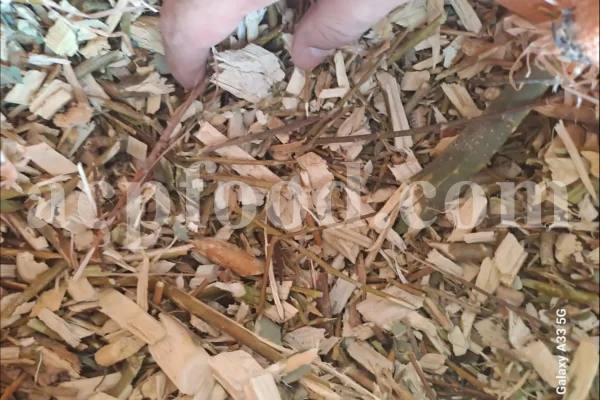
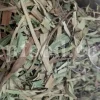

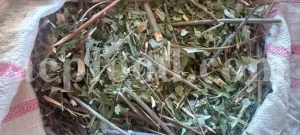
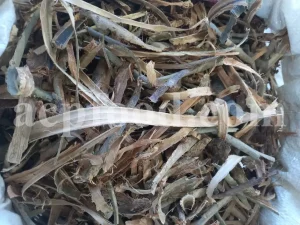
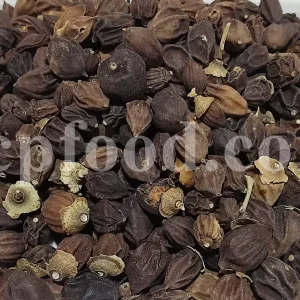
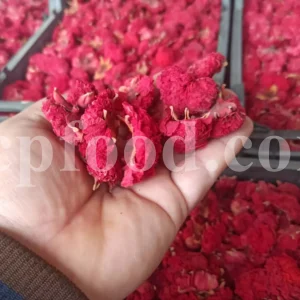
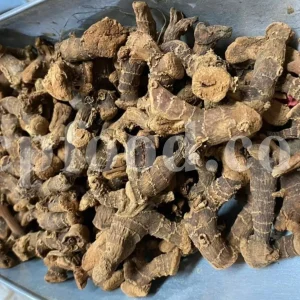
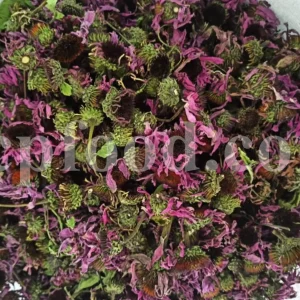
Reviews
There are no reviews yet.